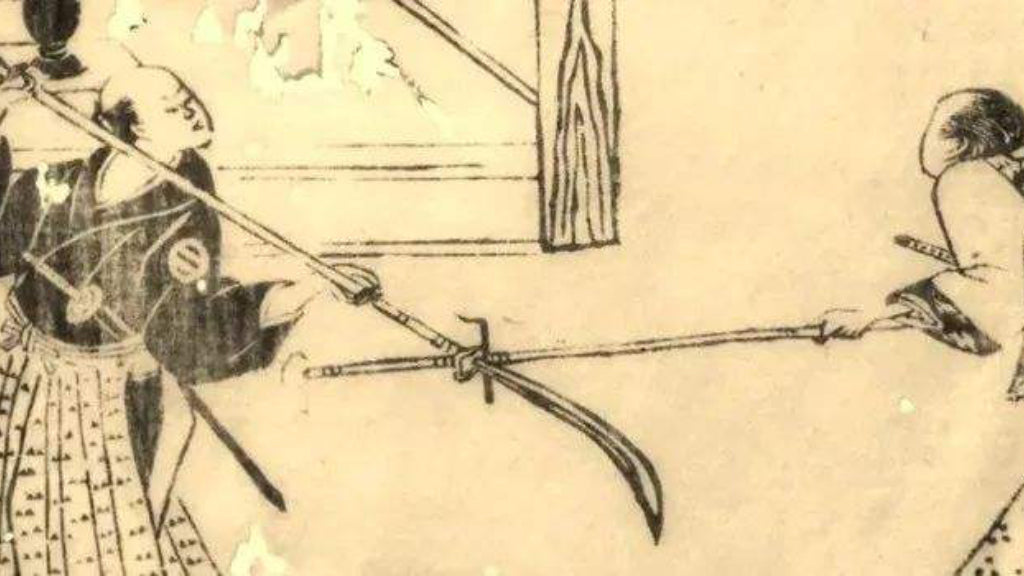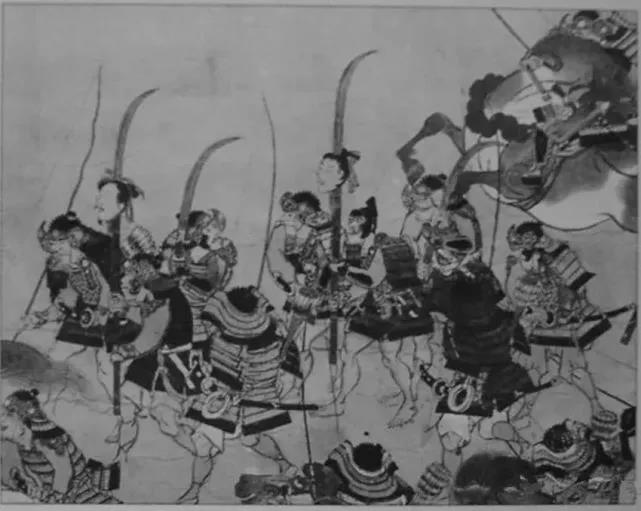What is Japanese Naginata?

What is Japanese Naginata?
Anime Naginata
The traditional Japanese Naginata is a pole weapon that has been used by samurai and warrior monks for centuries. Known for its long curved blade mounted on a wooden shaft, the Naginata was a versatile weapon, allowing warriors to maintain distance while delivering powerful slashes and thrusts.
In modern times, the Naginata remains an important symbol of traditional Japanese martial arts. It has also made its way into popular culture, appearing in many anime and manga series. The anime Naginata is often wielded by skilled female warriors, reinforcing its historical association with onna-bugeisha—female samurai who mastered this weapon.
Whether in history or anime, the Naginata continues to captivate martial arts enthusiasts and fans of traditional Japanese weaponry, preserving its legacy as a formidable and elegant blade.
Japanese Budo includes a variety of martial arts, including judo, karate, kendo, sumo, aikido, kyudo, jodo, etc. Among them, there is also a weapon martial art with a considerable position in Japanese history - Naginata. When it comes to thekatana, you need to understand the weapon of Naginata first. In the past, many people thought that it was a special weapon for Japanese samurai women, monk soldiers, and samurai, but in fact it was not the case.
Naginata, which was called 'long sword' before the Edo period, was not a special weapon for monk soldiers (the name only appeared in the Edo period). This impression comes from the imagination of the Edo period to the Meiji period. Women of the Edo samurai family actually practiced swordsmanship more than this katana, and women practiced this katana in practice at the end of the 19th century and the beginning of the 20th century.

1. According to legend, Naginata originated in the Tang Dynasty, and there are still different opinions.
Japan this swords is a long-handled weapon used by ancient Japanese military commanders. Since then, all female warriors have to learn this sword, and this sword has been transformed into a lighter weapon, which enables women to fully control, and also enhances the speed and mobility of the katana. And there are many Naginata for sale online now.
2. Naginata's Knife Technique
The current this sword technique has gradually evolved into a modern martial arts movement. The All Japan this katana Alliance established the current this katana style, and this katana technique has become one of the important items of Japanese martial arts fighting sports. In 1953, with the revival of martial arts, "Shuwukan" became the headquarters of Naginata all over Japan.
According to legend, this katana was introduced in the Nara period (710-794). Due to the close communication between Japan and China at that time, monks from the Tang Dynasty brought the swords used by Chinese monasteries to Japan, and gradually developed independently for the use of Japanese people. The lightweight broadsword, the Japanese the katana and the long scroll, became one of the commonly used weapons of monks and soldiers in the Nara period.
Although it is said that the so-called 'Crescent Sword' existed in the Western Han Dynasty, according to the development of ancient forging technology, the 'eyebrow sword', which is very similar to the katana in Chinese history, did not become a standing weapon in the army until at least the Song Dynasty. In Song Dynasty's 'Wu Jing Zong Yao', seven kinds of long-handled knives were introduced, such as drop knives, phoenix knives, pen knives, crook knives, halberd knives, moon knives, and eyebrow knives. Want to buy different types of Naginata online? COOLKATANA, one of the Japanese sword shops, would be a great choice.
3. Knife type of Naginata
The blade with a thinner body and a smaller curvature at the end is the 'jing' type, named after the concubine 'Jing Yuqian' of Yoshitsune. The blade with a wider body and a larger curvature at the end is the 'Ba' type, named after the concubine 'Ba Yuqian' of Yoshizhong Kiso. Existing this katanas are mostly of the "ba" type, because the curved blade enhances the cutting performance, making it easier for smaller people to swing on a horse. It is worth mentioning that after this katana gradually withdrawn from the battlefield, in addition to becoming a folk martial arts weapon, this katana were transformed into samurai swords and passed down in another form. This way of repairing and reshaping is called 'Naginata straight'. one is to grind the blade to fit the shape of the knife, and the other is to cut the stem to a suitable length.
The Naginata, historically wielded by foot soldiers and warrior monks, was a versatile and powerful battlefield weapon. Its long handle and curved blade allowed for extended reach, making it effective against cavalry and multiple opponents. The art of wielding the Naginata requires both strength and precision, blending fluid movements with strategic strikes. Over centuries, this weapon became not only a tool of war but also a symbol of discipline and skill, deeply rooted in Japanese martial traditions. Today, it remains an iconic weapon, celebrated in modern martial arts for its historical significance and cultural heritage.
